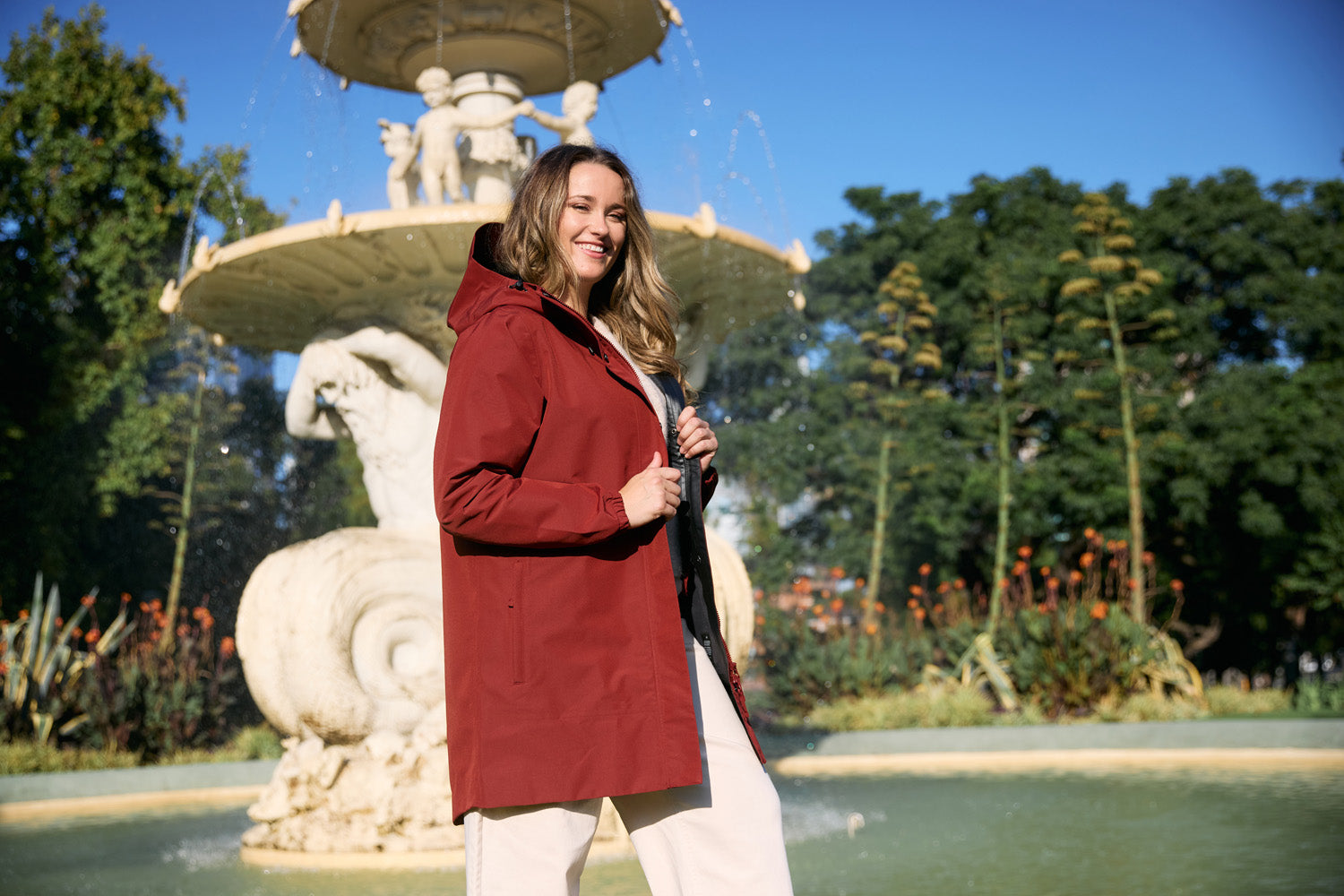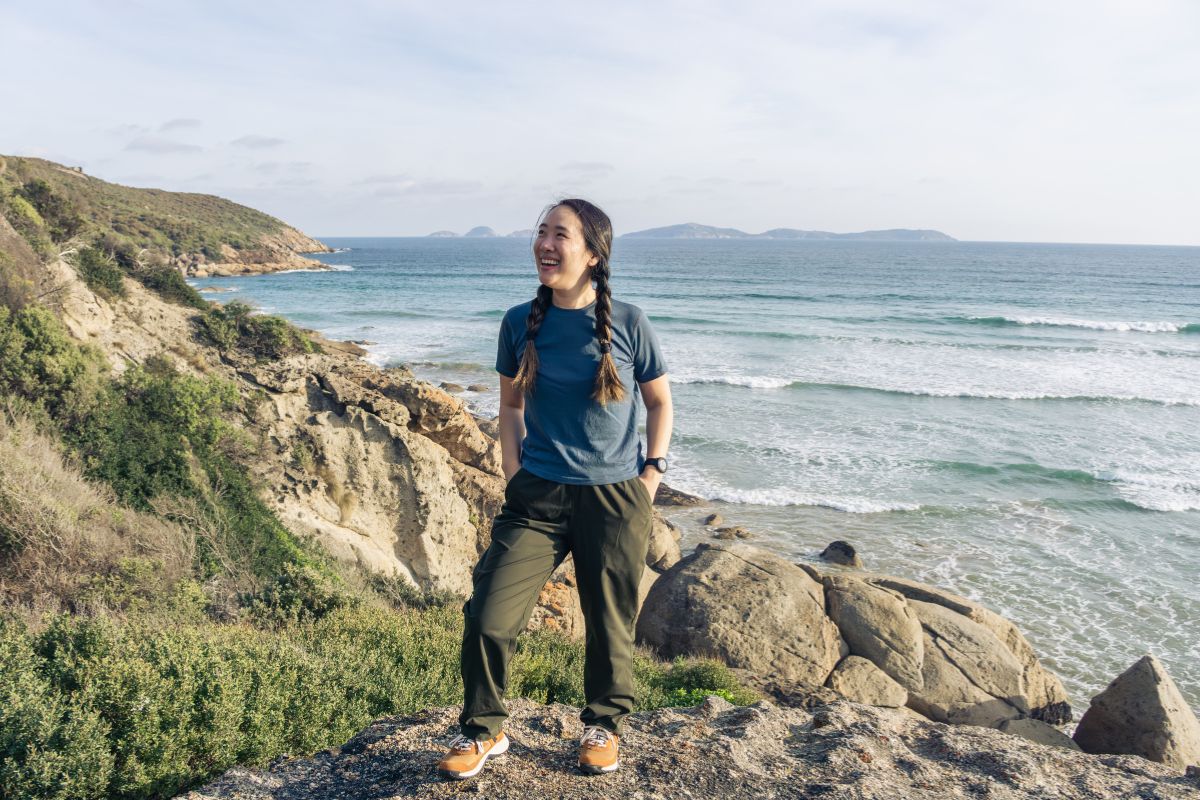How to Pick a Waterproof Jacket

Why Shopping for a Raincoat Can Feel Overwhelming
Let’s be real - shopping for a rain jacket can feel like stepping into a storm of confusion.You’re hit with waterproof ratings you’ve never heard of, breathability numbers with no context, jackets that all look weirdly the same (but cost wildly different amounts), and styles you’d never usually wear.
And the worst part? So many jackets promise to keep you dry but end up trapping heat or leaking the moment the weather turns. It’s almost as annoying as trying on jeans or swimmers.
But it’s not mission impossible, we’re here to decode some of the technical jargon, helping to keep you warm and dry in all seasons, without compromising on style or sustainability.
What Makes a Rain Jacket Actually Waterproof? 🌧️

Not all rain jackets are created equal - and just because it looks waterproof, doesn’t mean it is.
There’s a big difference between showerproof and waterproof. Showerproof fabrics usually have a coating that wears off quickly. Waterproof fabrics? They’re built differently, with a special membrane or backing that keeps water out - properly.
If your jacket’s waterproof, it should have a rating. Here’s what to look for:
-
2,000mm - light rain for short periods
-
5,000mm - better protection for everyday weather
-
15,000mm (15K) - designed for serious, all-day downpours
Bonus tip: Look for a DWR (Durable Water Repellent) finish. It helps rain bead up and roll right off the fabric. And make sure it’s PFC-free (like ours), so you get the performance without the harmful chemicals.
Why Breathability Makes All the Difference 💨

The breathability of a jacket will make it or break it. Especially in Australian and New Zealand climates, where there’s multiple seasons in a day and just because it’s raining, it doesn’t mean it’s 5 degrees outside. That’s why breathability is just as important as waterproofing.
The best fabrics won’t make you sweat and can handle both the breathability and waterproofing all at once. This does come at a price though, which is why cheaper jackets typically do make you sweat.
Breathability is measured similarly to waterproofing. They’re calculated in terms of how many grams of water vapour can pass through a square metre of fabric from the inside to the outside in a 24 hour period.
A 15K rated fabric transfers 15,000 grams of moisture from inside the jacket to the outside world aka, it’s very breathable, helping you stay dry from the outside in and the inside out.
Why Good Pockets Make Your Life Easier 🧳

Trust us: pockets are not just a nice-to-have. They’re a must. You want room for your keys, phone, snacks, hat, water bottle and kitchen sink, or ideally as much as you can cram in as possible.
Ideally you’re looking for some zippered pockets for the valuables as there’s nothing worse than losing your keys in the middle of nowhere and having no idea where to begin looking for them, the pre-panic of the thought of losing them is also pretty real. But our rule of thumb is the more pockets the better.
Two is great, four is unstoppable. And because we love practical details, our Jackets have an internal zipped pocket for extra secure storage.
The Importance of a Quality Zipper 🤐
 A great jacket with a dodgy zipper? Nope.
A great jacket with a dodgy zipper? Nope.
YKK is king here. Yes, there are other zipper suppliers in the world, but nothing holds up like YKK. And there’s nothing worse than a perfectly good jacket being let down by a split or broken zipper.
Which really only leaves you with one choice, make sure your zips don’t let you down.
P.S. Our jackets feature a two way YKK zip, making it easier to adjust your jacket for movement, ventilation, or just sitting down comfortably.
What to Know About Sustainable Waterproof Jackets ♻️

Natural fibres are best for sustainability, but we’re yet to discover a rain jacket made from silk or hemp, which is why synthetic (man made rather than naturally grown) fibres are best to create performance fabrics.
Traditionally synthetic fibres are derived from crude oil, which as we know is a big no no, which is why recycled fibres take the cake for sustainability here.
Rather than using non renewables that negatively impact the natural environment, you should be looking for recycled fabrics (preferably 100% recycled) such as a recycled polyester or recycled nylon to help you keep warm and dry.
Ideally these fabrics would be Global Recycle Standard (GRS) certified, to ensure they are in fact post consumer waste that has been recycled. Our jackets? 100% recycled, GRS certified, and made to last.
Why Ethical Production Matters 🤝

Beyond fabric performance and features, you really want to be supporting fairly and ethically made products. It’s a pretty intensive and costly process to create technical product such as waterproof, windproof, breathable rain jackets, so it’s important to check that no one is cutting corners, by people or planet.
Ask the sales staff, or dig around on the website to find out who made their product, what country was it made in and if they’re ethically certified or have credentials, such as SA8000, WRAP, BSCI.
These third party certifications state that the factories are all above board, workers are treated fairly and are working under conditions that are safe and abide by rules that we’d expect as standard laws: paid above minimum wage, no forced labour, no forced overtime, maximum working hours and other basic rights.
And if a brand isn’t openly talking about who made their clothes, where they’re made or what from, chances are they don’t have an ethical, sustainable supply chain.
The Final Word on Picking the Right Waterproof Jacket
The good things in life aren’t cheap (or free), but a waterproof jacket is an investment worth making, you’ll have it for years to come, and as with all things, it’s better purchasing the best quality one to start with, rather than the cheaper alternative that’ll leak, break and create a sweat. If you’re wondering where you could possibly secure one of these all the bells and whistles jacket, then you’re luckily in the right spot.
We’ve done the hard work for you, so you don’t have to sweat the small stuff (literally).
Our waterproof jackets come in three lengths: hip length, mid thigh, and below the knee, and are available in sizes XS-5XL. Designed for comfort and breathability, they’ll keep you dry without overheating, whether you’re caught in a drizzle or an all day downpour.
Because a good rain jacket should do its job - without making things complicated.
- Tags: Waterproof Jackets



